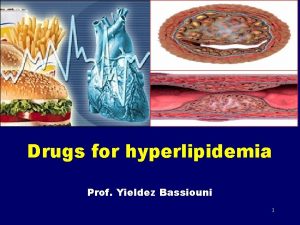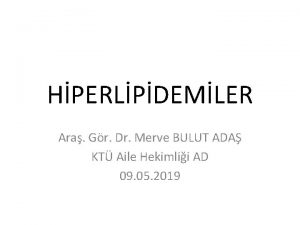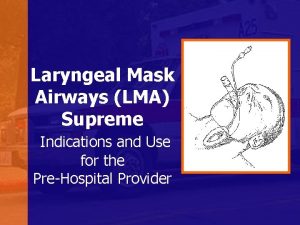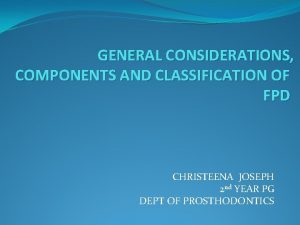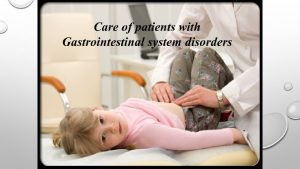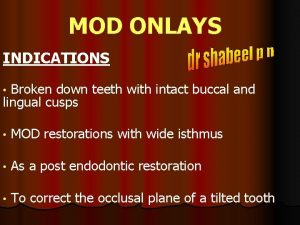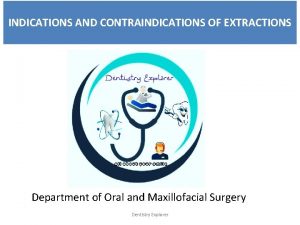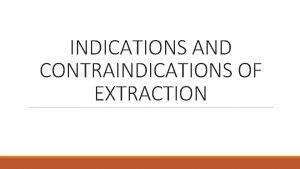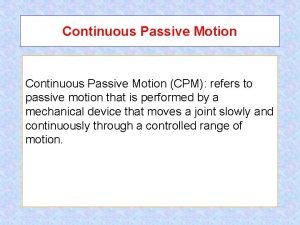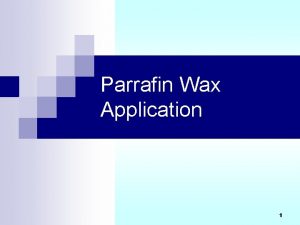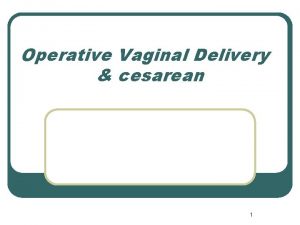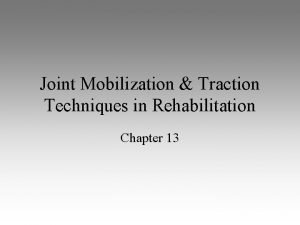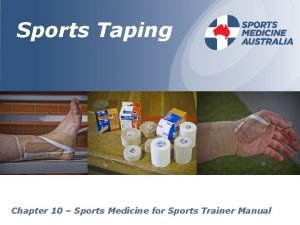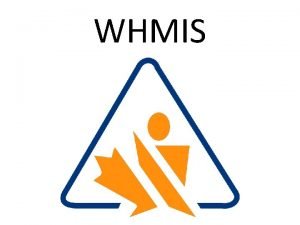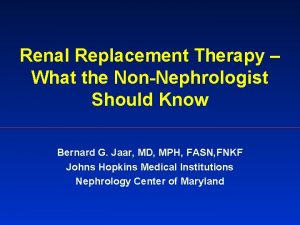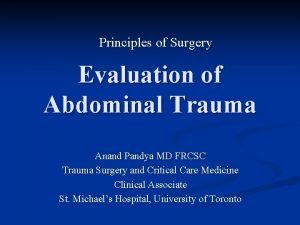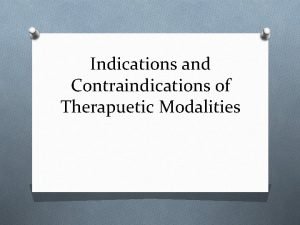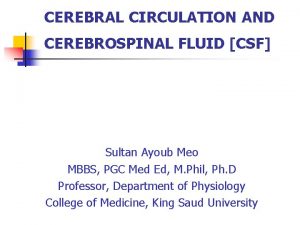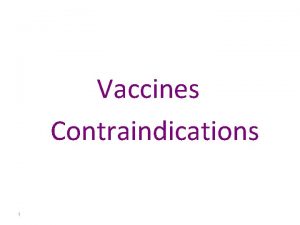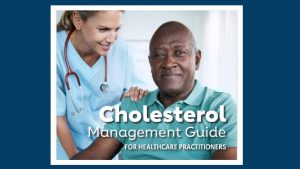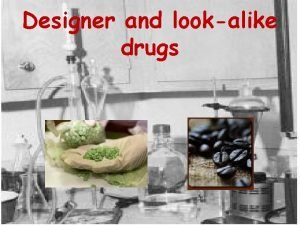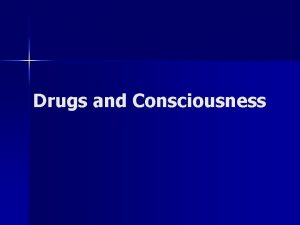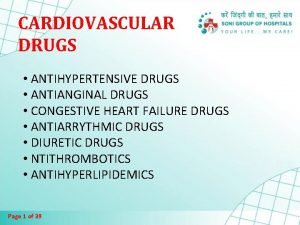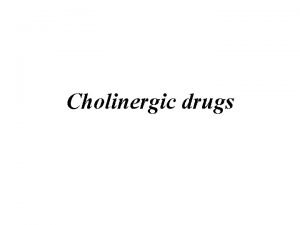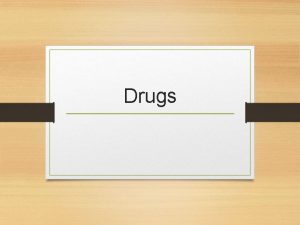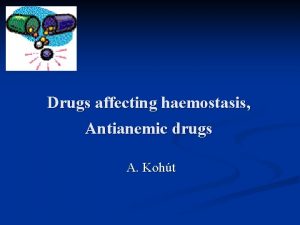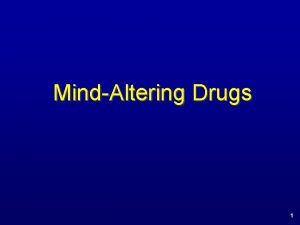Does coprescription of statin drugs and its contraindications





































- Slides: 37

Does co-prescription of statin drugs and its contraindications increase the risk of liver injury? The self-controlled case series approach Henry. K. O. Athiany JKUAT, STACS Department Statistical Modelling Workshop Strathmore University 23 rd -27 th July, 2012

Presentation outline �Background/Intro �Literature review (Systematic) �Aims and Objectives �THIN Database �The case-series design �Case-series approach ◦ Results, findings, summary �Results in context: Implications

Background/Introduction � Cardiovascular disease (CVD) � Statin drugs (…most widely prescribed in the UK) Atorvastatin(lipitor), Fluvastatin(lescol), Cerivastatin(lipobay), Pravastatin(pravachol), Rosuvastatin(crestor), Simvastatin(zocor) � Statin drug metabolism • Cytochrome P 450 3 A 4 (CYP 3 A 4) � Statin Contraindicated CYP 3 A 4 Inhibitor Drugs (SCCID)- (short-term: indication for use) • azole antifungals: fluconazole, ketoconazole, … • macrolide antibiotics: clarithromycin, telithromycin, … • Immunosuppressant : cyclosporine � Drug Induced Liver Injury (DILI)

Literature reviews (LRs) �Three part systematic reviews on risk of liver injury in: • Chronic statin drug users • SCCID users • Concomitant statin drug and SCCID users �Why three LRs?

LR(1): Findings & summary Chronic statin drug use (1987 -2011): results indicate; � Four (4) studies identified � Strong evidence that statin exposure is associated with higher risk of liver injury compared to non-exposure to statin drugs. (esp. 1 st one year of statin drug therapy) � Evidence of carry-over effects of statin drugs on risk of liver injury (rtn to normal 1 yr later) � Exposure to high dose statin may be assoc with higher risk of liver injury than low dose statin drug exposure

LR(2): Findings & summary SCCID users (1987 -2011): �Five (5) studies identified �Review supports the hypothesis that exposure to SCCID (macrolides antibiotics-erythromycin, clarithromycin, telithromycin; fluconazole) is associated with higher risk of liver injury compared to non-exposure (baseline) to these drugs. �Potential confounders identified: gender, age, ethnicity, cigarette smoking, co-morbidities, diabetes, e. t. c �More research to clarify on the relationship between SCCID and the risk of liver injury.

LR(3): Findings & summary Concomitant statin drug and SCCID use • No studies identified • First study to review the literature on the association between risk of liver injury and exposure to coprescription of statin drugs and SCCID among adult chronic statin users. • Results supports the need to carry out a population based study, to assess this association among adult patients on long-term statin therapy.

LR: Overall summary • Exposure to statin drugs or SCCID is associated with higher risk of liver injury than non-exposure to these drugs. • There is limited/no evidence of research (19872011) that has considered assessing the association between co-prescription, and eventually concomitant exposure to both statin drugs and SCCID, and the risk on liver injury.

Aim To asses the association between co-prescription of statin drugs and statin contraindicated CYP 3 A 4 inhibitor drugs (SCCID), and the risk of liver injury using data from a sample of the UK adult population, adjusting for potential confounders using the Self-controlled case-series design

Objectives �To asses and quantify the association between co-prescription of statin drugs and SCCID and first liver injury event. �To assess the confounding effect of age in the association between coprescription of statin drugs and SCCID and the risk of liver injury.

Objectives �To assess the effect on the risk estimates with regard to changing the length of the carry-over risk periods. �To assess the assumptions of the case-series method as a way of checking its validity for the current study.

The Health Improvement Network (THIN) Database �Primary care in UK has a very comprehensive coverage of the population: • 98% registered with a general practitioner (GP) • Patient visit results in: offer advice, prescribe drug, refer to a specialist or further tests • Medical and prescription data are recorded �Presc data: - dosage; prescription quantity; amount; free text • Several databases: GPRD, THIN, QResearch � THIN, large GP database, longitudinal patient records retrieved from practicing GPs across UK • Data collection began, 2003 (1988);

The Health Improvement Network (THIN) Database • By August 2006, data from 326 practices, 5. 5 m patients, 2. 5 actively registered, formed 4% of the UK population. • By Jan, 2011; 503 practices, 9. 15 m patients, 3. 54 actively registered; representing ~6% of the UK population. • THIN demographically representative of the UK Pop. Patient information organised in: � Demographics: gender, dob, date of registration/leaving practice � Diagnosis: medical diagnosis, date of diagnosis, free text (if available) � Prescribing: presc and presc dates, formulation, strength, qty and dosing instruction. � AHI: Info on lifestyle and health factor e. g smoking, alcohol intake etc � SES/SEP

What is the case-series method? �The self-controlled case series (SCCS) method is an alternative study method for investigating the association between a transient exposure and an adverse event. Whitaker et al, 2005 �The method was developed to study adverse reactions to vaccines (MMR Vaccine-1992). The method uses only cases, no separate controls are required as the cases act as their own controls. Whitaker et al, 2005

What is the case-series method? � Time-varying confounding factors such as age can be allowed for by dividing up the observation period further into age categories. An advantage of the method is that confounding factors that do not vary with time, such as genetics, location, socio-economic status are controlled for implicitly. Whitaker et al, 2005 � Each case's given observation time is divided into control and risk periods. Risk periods are defined during or after the exposure. Then the method finds a relative incidence, that is, the incidence in risk periods relative to the incidence in control periods. Whitaker et al, 2005


Fig. 1 Individual i A general illustration of a case's observation time divided into control, risk periods and age-bands Start of observation “Event” Liver injury Risk period End of observation * Control period Age group 1 Age group 2

Case series: Summary � It is a conditional cohort method: exposures are regarded as fixed, event times as random. � Follow-up is not censored at event. � The method can be used with independent recurrent events, or uncommon non-recurrent events. � Only cases are required: estimation is within-individuals. � The analysis is self-matched, thus eliminating the effect of fixed confounders. � It has been programmed in standard statistics packages. Whitaker et al, 2005


Whitaker et al, Stat Methods Med Res. 2009 Feb; 18(1): 7 -

However… The method has three stringent assumptions: 1) Independent but recurrent events within an individual 2) The occurrence of an event must not alter the probability of subsequent exposure. 3) The occurrence of the event of interest must not censor or affect the observation period.

More details on the Website (created by Heather Whitaker) http: //statistics. open. ac. uk/sccs/papers. ht m � Tutorial paper: Whitaker et al. , Statist. Med. 2006, 25: 1768 – 1797 � Other papers: • semi-parametric model: avoids mis-specification of age specific baseline incidence, (Farrington CP and Whitaker HJ, 2006) • sample size estimation, (Musonda et al, 2006) • small sample performance (Musonda et al, 2007) � Example datasets and analysis files in Stata, SAS, GENSTAT, GLIM and R.

The case series approach using THIN Dataset

Examples of four possible timings of the outcome event liver injury for a patient in a follow-up period Liver injury Case 1 3 months 6 months (event free) Liver injury Case 2 3 months 6 months (event free) Liver injury Case 3 3 months 6 months (event free) Liver injury Case 4 3 months 6 months (event free) Baseline period Fig. 4 Date of registration with a practice Periods of statin only therapy Start of observation period Periods of both statin and SCCID therapy End of observation period Periods of SCCID only therapy

Definitions �Drug exposures • • Statin drug alone ‘may be’ statin drug alone SCCID exposure Co-prescription of statin and SCCID-main exposure of interest -repeat and multiple drug exposures �Outcome • Liver injury in the observation period

Statin alone and ‘maybe’ statin alone exposure definition Fig. 2

Definition of repeat statin only exposure, and multiple statin drug exposure in the observation period Fig. 3

Participants and Data management (DM) �Aged ≥ 18 yrs at entry into the study �Diagnosed with DILI ≥ 9 moths after registration with practice �Had ≥ 1 presc of statin/SCCID in the obs prd DM Statin exposure-cont. unless interval >6 m SCCID-prescription duration Exposure periods-See Fig 5

An illustration of an individual case timeline with exposures to single drugs and co-prescription Fig. 5 Event, Liver Injury

Case series: Results (1) Rate ratios of first liver injury event in the four possible drug exposure periods in a patient’s timeline given seven-days carryover period

Case series: Results (2) Summary of the sensitivity analyses results with the seven -day carry-over period

Main findings/discussions � Sig. higher rate of first liver injury event in the periods of: • co-prescription of statin drugs and SCCID • ‘may be’ statin drugs alone • SCCID alone Compared to baseline (unexposed periods) � Rates attenuated with increased carry-over intervals � No evidence to support hypothesis…. .

Strengths and limitations � Strengths of the study: • Dealing with both unmeasured and some measured confounding effect…residual confounding minimised; good face validity; data used has been validated; e. t. c • Confounding by indication (sensitivity analysis-7 days preexposure period) � Possible weaknesses: • Misclassification of exposure periods, patient adherence not measured but assumed once drug was prescribed. • True risk periods unknown (sensitivity analysis)

Overall Summary Although the study has shown evidence of an association between periods of exposure to co-prescription of statin drugs and SCCID; statin drugs alone; or SCCID alone; compared to baseline (no drug), there is no evidence that periods of co-prescription of statin drugs and SCCID increased the risk of liver injury than when compared to periods of statin drugs alone or SCCID alone These results, were less prone to the problem of confounding bias (in cohort design), and the validity of the results have been assessed thro sensitivity analyses of the stringent assumptions.

Results in context: implications � Lack of increased risk of liver injury as hypothesised in the study may be due to: • Induction of alternative metabolic pathways • Selective medication taking by patients (may be influenced by GP advice) � Clinicians to maintain close monitoring of statin drug users � Prescribers may use the results to make more informed decisions in prescribing SCCID to patients already on statin drug therapy.

Selected References 1. C. P. Farrington, H. J. W. , Semiparametric analysis of case series data. Journal of the Royal Statistical Society: Series C (Applied Statistics), 2006. 55(5): p. 553 -594. 2. Farrington, C. P. , et al. , Self-controlled case series analysis with event-dependent observation periods. Journal of the American Statistical Association, 2011(0): p. 1 -10. 3. Farrington, C. P. and M. N. Hocine, Within-individual dependence in self-controlled case series models for recurrent events. Journal of the Royal Statistical Society: Series C (Applied Statistics), 2010. 59(3): p. 457 -475. 4. Farrington, C. P. , H. J. Whitaker, and M. N. Hocine, Case series analysis for censored, perturbed, or curtailed post-event exposures. Biostat, 2009. 10(1): p. 3 -16. 5. Musonda, P. , et al. , Self-controlled case series analyses: Smallsample performance. Computational Statistics & Data Analysis, 2008. 52(4): p. 1942 -1957. 6. Whitaker, H. J. , et al. , Tutorial in biostatistics: the self-controlled case series method. Stat Med, 2006. 25(10): p. 1768 -97. 7. Whitaker, H. J. , M. N. Hocine, and C. P. Farrington, The methodology of self-controlled case series studies. Stat Methods Med Res, 2009. 18(1): p. 7 -26.

Thanks to: � Bloomsbury consortium & JKUAT(financial support) � Research supervisors • Dr. Mariam Molokhia • Dr. Dorothea Nitsch • Prof. Nick Barber � General Practitioners � Patients who provided data for research � CEGEDIM strategic staff (THIN database)
 Statin moa
Statin moa Diabetes statin guidelines 2020
Diabetes statin guidelines 2020 Beslenme epidemiyolojisi
Beslenme epidemiyolojisi Pit and fissure meaning
Pit and fissure meaning Emigree poem analysis
Emigree poem analysis Its halloween its halloween the moon is full and bright
Its halloween its halloween the moon is full and bright Indication & contraindications of rpd
Indication & contraindications of rpd Indication of lma
Indication of lma Questionable abutment in fpd
Questionable abutment in fpd Endoscopy nursing responsibilities
Endoscopy nursing responsibilities Counter bevel onlay
Counter bevel onlay Contraindications of extraction
Contraindications of extraction An absolute contraindication for extraction of teeth is
An absolute contraindication for extraction of teeth is Continuous passive motion indications and contraindications
Continuous passive motion indications and contraindications Passive motion definition
Passive motion definition Contraindications of paraffin wax
Contraindications of paraffin wax Indication of forceps delivery
Indication of forceps delivery Movement physiology
Movement physiology Kaltenborn traction grading scale
Kaltenborn traction grading scale Sports medicine taping techniques
Sports medicine taping techniques When a train increases its velocity, its momentum
When a train increases its velocity, its momentum Cloudy windy rainy sunny
Cloudy windy rainy sunny If its square its a sonnet summary
If its square its a sonnet summary Its not easy but its worth it
Its not easy but its worth it Whmis
Whmis When was remains poem written
When was remains poem written Peritoneal dialysis contraindications
Peritoneal dialysis contraindications Contraindications to ct contrast
Contraindications to ct contrast Physiological effects of irr
Physiological effects of irr Contraindications of nail care in nursing
Contraindications of nail care in nursing Thermotherapy contraindications
Thermotherapy contraindications Hydrocollator packs
Hydrocollator packs Gic composition
Gic composition Apex locator mechanism
Apex locator mechanism Direct retainer classification
Direct retainer classification Cold wax milady
Cold wax milady Pasg contraindications
Pasg contraindications Contraindications of lumbar puncture
Contraindications of lumbar puncture
